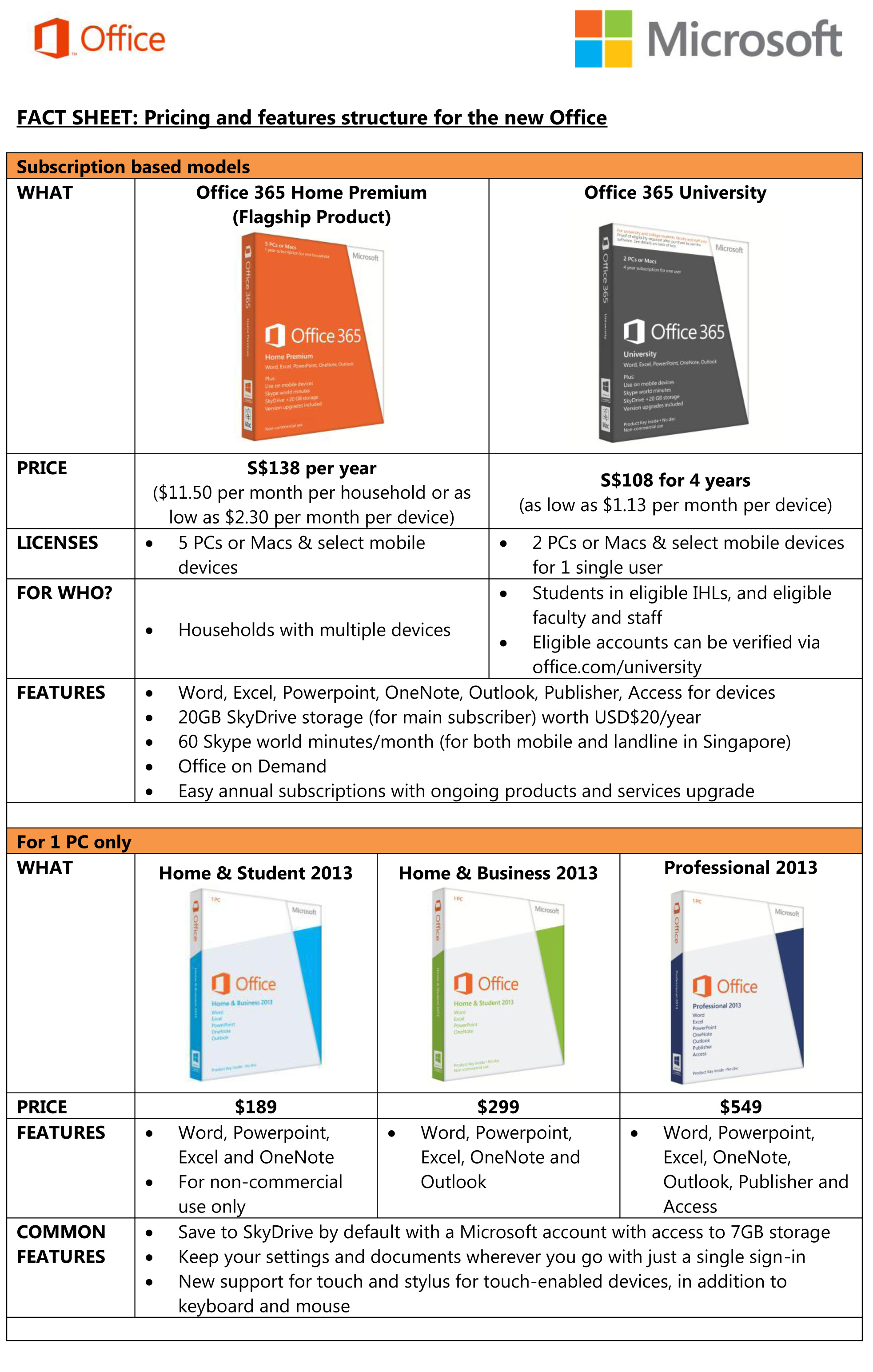Microsoft banks on Office's usability, subscription licensing appeal

Singapore: Microsoft hopes its new Office 2013 productivity suite, which sports a cleaner, touch-enabled design and now comes with subscription-based licensing, will better resonate with Asian customers who are using more mobile devices at work and play currently.
The latest version of Microsoft's Office suite was launched worldwide on January 29, together with the consumer-targeted Office 365 Home Premium. The latter is a cloud-based offering that gives users access to Office 2013 in up to five devices--PCs, Macs, or Windows tablets--for a subscription fee.
In Singapore, customers will have to pay S$138 (US$111.75) for a year's subscription to Office 365 Home Premium and the package includes staples such as Word, Excel, PowerPoint, and OneNote, as well as 20 gigabytes of SkyDrive storage and 60 Skype world minutes per month for both mobile and landline, the company revealed at a launch event held here Wednesday. A monthly subscription option, available in the US, is not for customers here.
By comparison, the boxed version of the Office Home & Student 2013 software offers Word, PowerPoint, Excel, and OneNote at S$189 (US$152.79), and limited to a single install. Online storage via SkyDrive is capped at 7GB for users with a Microsoft account, it noted.

The software giant, which recently made its first foray into the hardware business with its Surface tablet, has been trying to strengthen its market position in a time when tablets and smartphones are steadily outpacing PC sales, which used to be its dominant installed base.
Reed Wotiz, regional director of Office marketing at Microsoft-Asia-Pacific, said in an interview during the event: "What we're trying to do is go with the trend of multiple devices, and say, 'It's your Office on any device, anywhere you go.' It doesn't really matter to Microsoft what those devices are. We want to make sure we're everywhere on all devices."
The new Office subscription model is a "pretty fundamental shift in behavior" though, and Wotiz expects it will take some time to gain traction with consumers. "In Asia-Pacific, we're forecasting 10 percent to 20 percent of customers opting for subscription rather than perpetual license for one device in the very short term of 6 to 12 months."
Over the next two years, people will see the value behind Office 365 Home Premium and consumer behavior and adoption will rapidly evolve, he predicted.
John Fernandes, director of marketing and operations at Microsoft Singapore, added in the same interview that the choice between subscription-based licensing or boxed software will depend on users and what mobile devices they use and how they want to use the application.
While this is a new version of Office, it represents a generational shift that recognizes the underlying trends of device proliferation, instant access anywhere, and cloud subscription, he said.
There is a high dependence on mobile devices in Asia. More than 85 percent of Asian employees engage in bring your own device (BYOD) at work, higher than the global figure of 74 percent, according to a Fortinet study last year.
Improved usability a key feature
As such, the new user interface (UI) and experience of Office was as important as its technical functionality, Fernandes highlighted. Taking design cues from its Windows 8 operating system, the latest Office product is touch friendly, accessible across multiple device platforms, and looks brighter, with less clutter on its user interface.
"People rarely describe Office as beautiful but [this one has] got a lot of unique rich experiences built into the UI--the cleanness, the leanness, and the speed of navigation," he said, adding that users should have the same rich, consistent experience with the software whether they access it via their PC, phone, or tablet. Smartphones running Windows Phone 8 already come with a mobile version of Office.
Elaborating on the new Office UI, Gerald Leo, business group manager at Microsoft Singapore's Office division, said a more clean-cut interface is practical to cater to the different screen sizes. There is now more real estate for the actual content, whereas previous versions were cluttered with information and commands from the menu ribbon dropdown bar, he added.
Opening a Word document on a tablet in reading mode is now similar to reading an e-book simply by "flipping" across the screen, he pointed out.
"We're just enabling people to be productive in a different way, which is touch-enabled," Leo said, adding that this should play well with a market that is seeing the line blur between a consumer and an enterprise user.